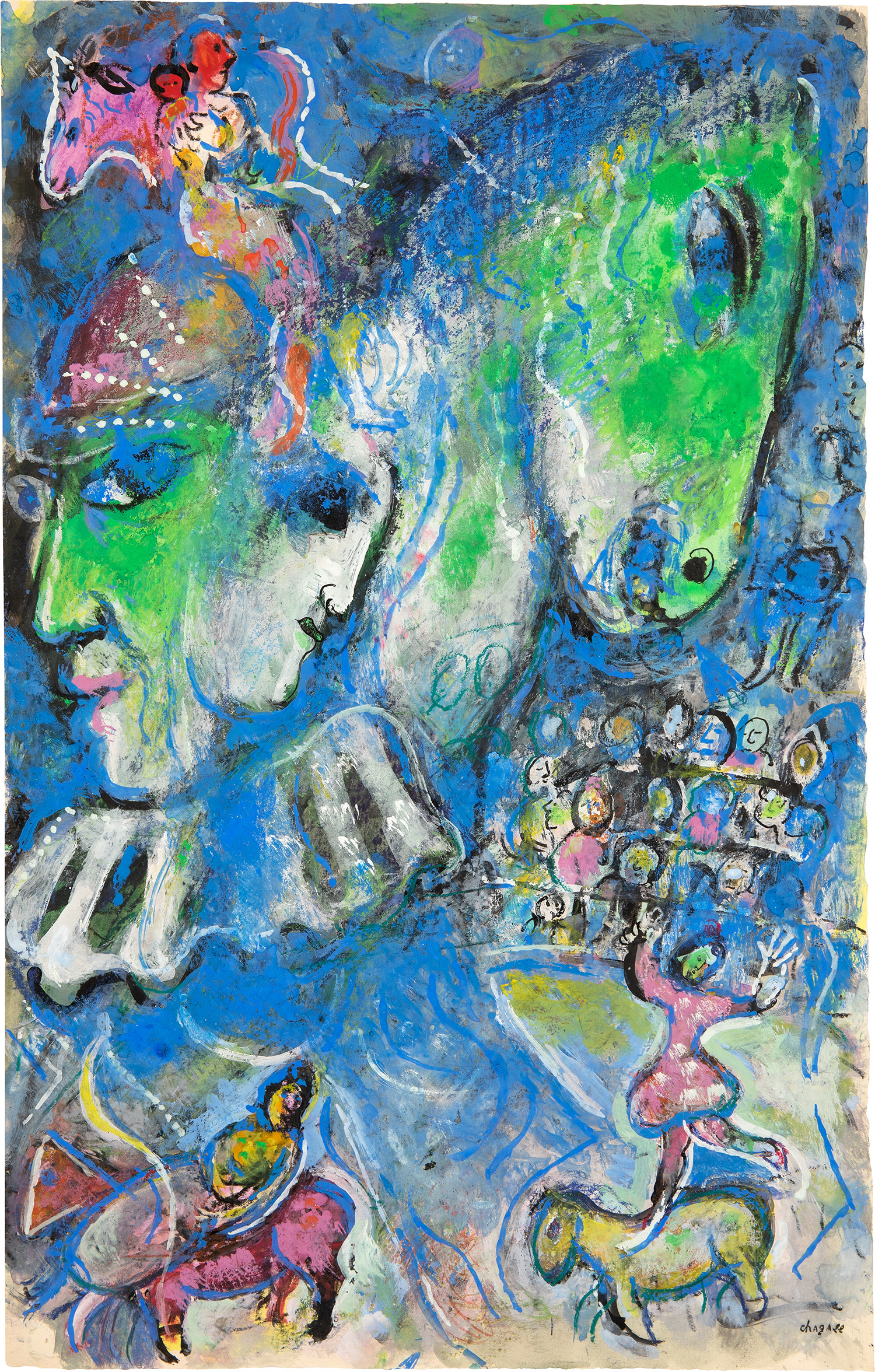

Property from a Distinguished Private European Collection
29Ο◆
Marc Chagall
Deux profils verts au cirque
stamped ‘Chagall’ lower right
gouache, pastel, ink and collage on paper
50.9 x 32.8 cm (20 x 12 7/8 in.)
Executed in 1966, the work is accompanied by a certificate of authenticity issued by the Comité Marc Chagall and is recorded under no. 2014083.